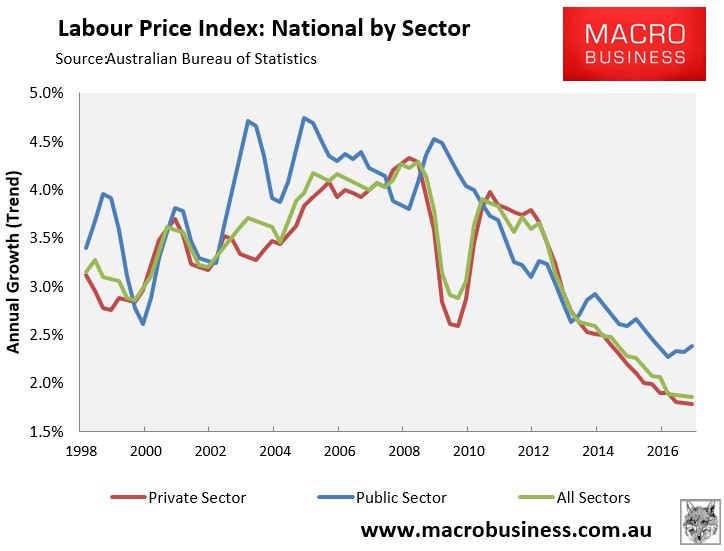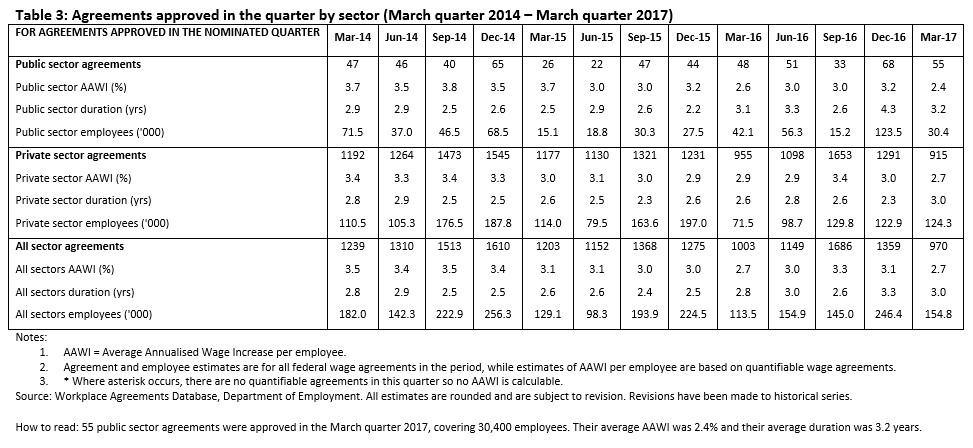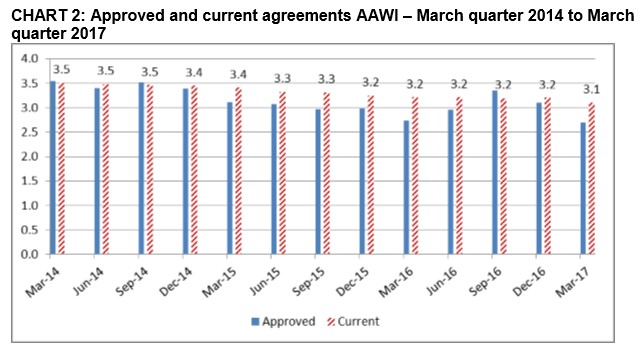The Australian’s Adam Creighton has penned an interesting article today arguing that Australian real wages growth is likely to receive a short-term artificial reprieve thanks to the minimum wages decision and upcoming changes to the way the consumer price index (CPI) is calculated:
Here’s a prediction for you. The workers’ run of meagre real wage increases will end over the next few months.
Gone will be the 0.4 or 0.5 per cent quarterly wage gains, as reported by the quarterly “wage price index”, that workers have put up with for the past couple years…
The coming increase won’t be owing to a bounce in productivity or bout of industrial action that squeezes more dollars out of the boss, but the artificial hand of government…
The Fair Work Commission’s decision in June to lift the minimum wage 3.3 per cent to $18.29 from July, far more than the 2.4 per cent rise granted the previous year, will affect so many workers that aggregate wage growth will jump. About 2.3 million workers are on directly affected by awards of the national minimum wage, potentially resulting in a 0.7 per cent rise or more in the WPI in September, something that hasn’t happened since 2013…
Anyway, that means if FWA helps the September wage growth figures, it will be the Australian Bureau of Statistics’ turn in December when it changes the way it calculates inflation in a way that is sure to lower it.Lower inflation means higher real wage growth.
The final reading of the consumer price index for 2017, for the three months leading up to Christmas, will see brand spanking new expenditures weights…
Anyway, updating the weights will unambiguously reduce the rate of growth of the consumer price index. Voila — higher real wage growth!
Unfortunately, both these effects are artificial.
I would argue that overall Australian wages growth is already artificial, given it is being inflated by the public service, whose wages are paid for by taxpayers and are decoupled from productivity improvements:

Still, I get Creighton’s point.
That said, it is important to point out that the latest round of approved enterprise agreements have recorded falling wages growth (see below graphics).


With most enterprise agreements valid for three years, meaning the recent lower negotiated wages will take time to filter through to those still covered by established agreements, there should be continued downward pressure on overall wages growth.

